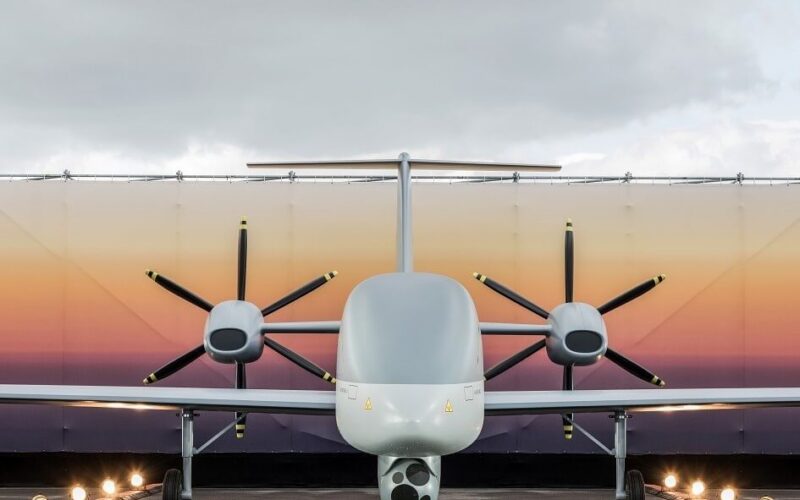After years of stalling, the European MALE drone, or Eurodrone project, could finally move forward. French Minister of the Armed Forces Florence Parly said she was confident an agreement would be reached among participating countries before the end of 2020.
The French minister is due to meet her German counterpart, Annegret Kramp-Karrenbauer, on September 17, 2020. Together, they will visit the Airbus plant in Manching, southern Germany, where they will be shown the latest advancements on the Future Combat Air System (FCAS), the next-generation fighter jet program conjointly developed by the two countries along with Spain. Then, the future of the European drone project should be put on the table.
Launched in 2015, this MALE (Medium altitude, long endurance) drone project should bring together France, Germany, Italy, and Spain. Airbus led the development, with the French Dassault Aviation and the Italian Leonardo as partners. The objective is eventually for the European armed forces not to depend entirely on the capacities of the U.S.-built General Atomics Reaper drone. Powered by two turboprop engines, the UAV should be massive, weighing approximately 11 tons when fully armed (against 4 for the Reaper).
With the retirement in January 2018 of the MALE Harfang UAV, developed by Airbus and Israel Aerospace Industries, the U.S.-made MQ-9 Reaper became essential to the French operations. In January 2014, six Reaper Block 1 UAVs were acquired by France. Four of them have been engaged in Operation Barkhane, in Mali, and had registered over 23.000 hours of operations in 2018.
Since the 2019 edition of the Paris Air Show, not much has emerged regarding the Eurodrone project. Negotiations among the partner countries and manufacturers have stalled due to a controversy regarding its price. France especially voiced its concerns that a MALE drone could hardly enter the market today if it were to be more expensive than its U.S. competitors. This just became increasingly true, as the successor of the Reaper was coincidentally unveiled by General Atomics on September 14, 2020, in the form of a stealthy flying wing capable of carrying out its mission in a contested environment, something that the simpler Eurodrone would not be able to achieve.
However, in an unexpected turn of event, the office of the French Minister of the Armed Forces reignited a spark of confidence in the project ahead of the ministerial meeting with Germany. “A formal decision will be taken normally before the end of the year,” it declared to Agence France Presse. “We congratulate ourselves on the French side for having put enormous pressure on the industrial side because, with our persistence, we end up getting there.” The news questions whether the industrial partners managed to lower their price, or if some tactical capabilities were removed from the drone — or both?
If everything goes according to plan, Germany should receive its first Eurodrone in 2027, and while France would take delivery in 2028… about two years before the Reaper’s successor is expected to enter service.

